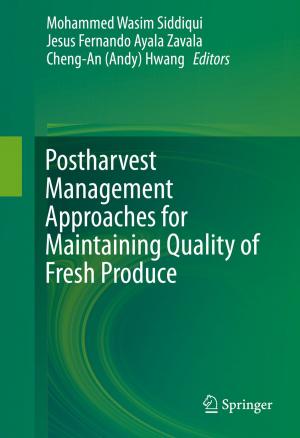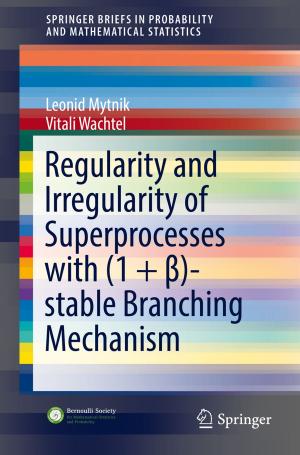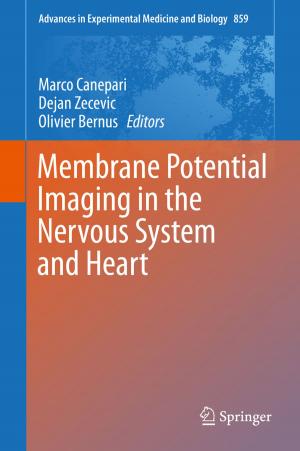The Alkali Metal Ions: Their Role for Life
Nonfiction, Science & Nature, Science, Biological Sciences, Biochemistry| Author: | ISBN: | 9783319217567 | |
| Publisher: | Springer International Publishing | Publication: | February 9, 2016 |
| Imprint: | Springer | Language: | English |
| Author: | |
| ISBN: | 9783319217567 |
| Publisher: | Springer International Publishing |
| Publication: | February 9, 2016 |
| Imprint: | Springer |
| Language: | English |
MILS-16 provides an up-to-date review of the impact of alkali metal ions on life. Their bioinorganic chemistry and analytical determination, the solid state structures of bio-ligand complexes and the properties of alkali metal ions in solution in the context of all kinds of biologically relevant ligands are covered, this includes proteins (enzymes) and nucleic acids (G-quadruplexes). Minerals containing sodium (Na+) and potassium (K+) are abundant in the Earth's crust, making Na+ and K+ easily available. In contrast, the alkali elements lithium (Li+), rubidium, and cesium are rare and the radioactive francium occurs only in traces. Since the intra- and extracellular, as well as the compartmental concentrations of Na+ and K+ differ significantly, homeostasis and active transport of these ions are important; this involves transporters/carriers and pore-forming ion channel proteins. Systems like Na+/K+-ATPases, H+/K+-ATPases or Na+/H+ antiporters are thoroughly discussed. The role of K+ in photosynthesis and the role of Na+ in charging the "battery of life" are pointed out. Also, the relationships between alkali metal ions and diseases (e.g., Parkinson or traumatic brain injury) are covered and the relevance of Li+ salts in medicine (pharmacology and mechanism) is reviewed. This and more is treated in an authoritative and timely manner in the 16 stimulating chapters of Volume 16, The Alkali Metal Ions: Their Role for Life, which are written by 44 internationally recognized experts from 12 nations. The impact of this vibrant research area is manifested in nearly 3000 references, over 30 tables and more than 150 illustrations (two thirds in color). MILS-16 also provides excellent information for teaching**.**
Astrid Sigel, Helmut Sigel, and Roland K. O. Sigel have long-standing interests in Biological Inorganic Chemistry. Their research focuses on metal ion interactions with nucleotides and nucleic acids and on related topics. They edited previously 44 volumes in the series Metal Ions in Biological Systems*.*
MILS-16 provides an up-to-date review of the impact of alkali metal ions on life. Their bioinorganic chemistry and analytical determination, the solid state structures of bio-ligand complexes and the properties of alkali metal ions in solution in the context of all kinds of biologically relevant ligands are covered, this includes proteins (enzymes) and nucleic acids (G-quadruplexes). Minerals containing sodium (Na+) and potassium (K+) are abundant in the Earth's crust, making Na+ and K+ easily available. In contrast, the alkali elements lithium (Li+), rubidium, and cesium are rare and the radioactive francium occurs only in traces. Since the intra- and extracellular, as well as the compartmental concentrations of Na+ and K+ differ significantly, homeostasis and active transport of these ions are important; this involves transporters/carriers and pore-forming ion channel proteins. Systems like Na+/K+-ATPases, H+/K+-ATPases or Na+/H+ antiporters are thoroughly discussed. The role of K+ in photosynthesis and the role of Na+ in charging the "battery of life" are pointed out. Also, the relationships between alkali metal ions and diseases (e.g., Parkinson or traumatic brain injury) are covered and the relevance of Li+ salts in medicine (pharmacology and mechanism) is reviewed. This and more is treated in an authoritative and timely manner in the 16 stimulating chapters of Volume 16, The Alkali Metal Ions: Their Role for Life, which are written by 44 internationally recognized experts from 12 nations. The impact of this vibrant research area is manifested in nearly 3000 references, over 30 tables and more than 150 illustrations (two thirds in color). MILS-16 also provides excellent information for teaching**.**
Astrid Sigel, Helmut Sigel, and Roland K. O. Sigel have long-standing interests in Biological Inorganic Chemistry. Their research focuses on metal ion interactions with nucleotides and nucleic acids and on related topics. They edited previously 44 volumes in the series Metal Ions in Biological Systems*.*















